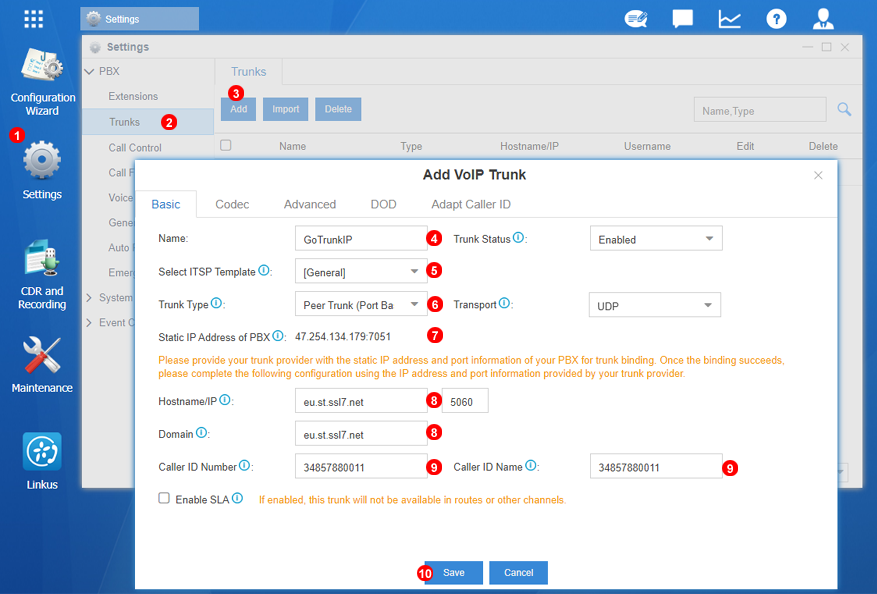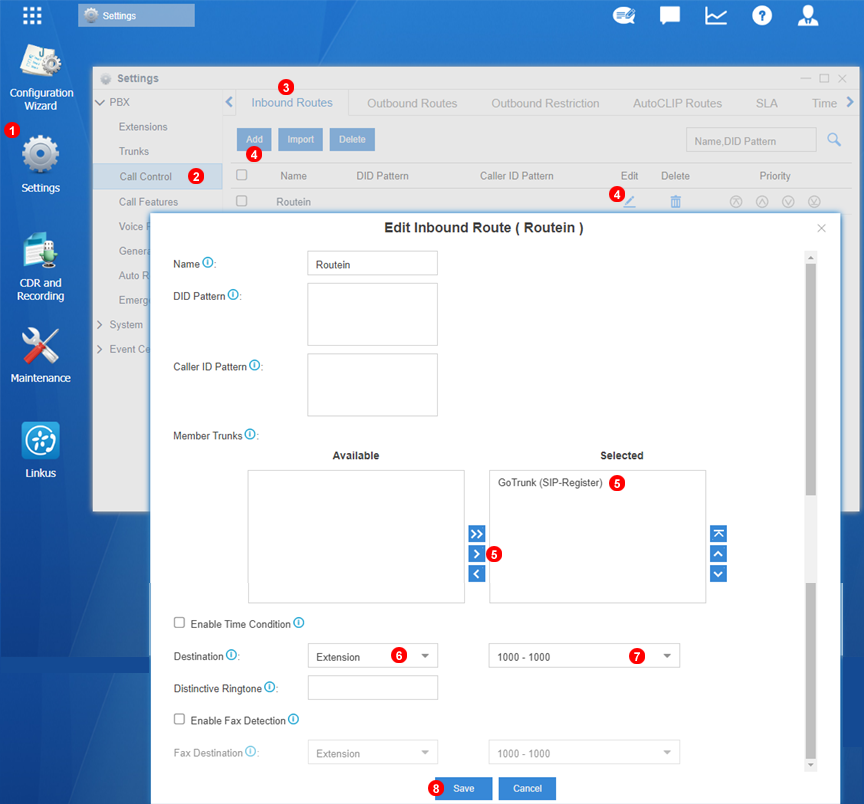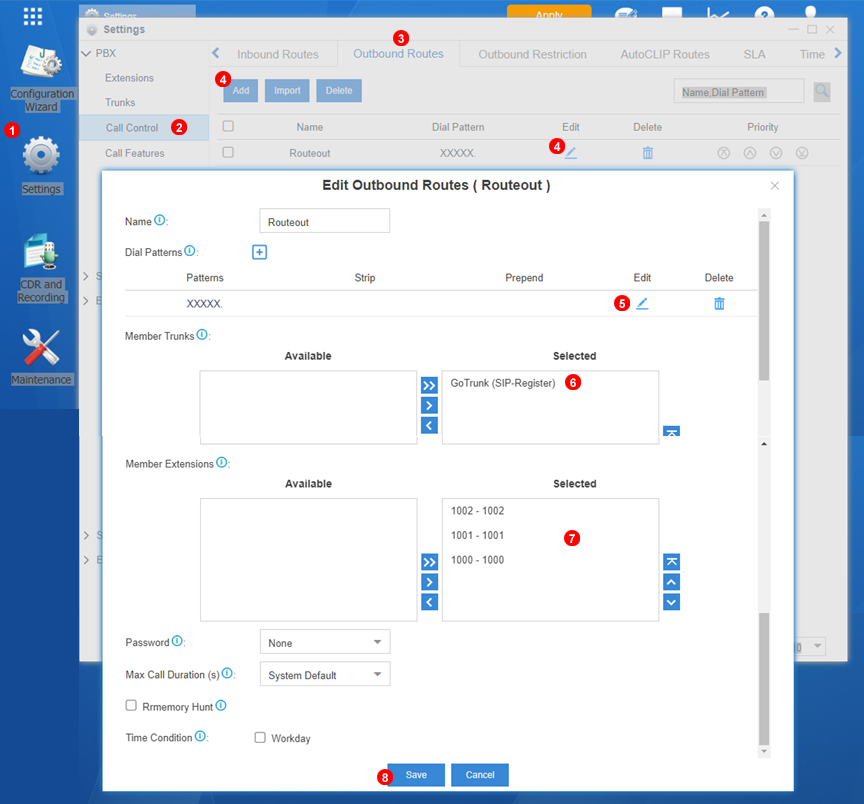IP PBX Configuration - Yeastar¶
Yeastar has software-based but also hardware IP-PBX that offers complete Unified Communications features, out of the box. SIP Trunk configuration instructions below apply to the following Yeastar versions:
- Cloud PBX
- P-Series, software based
- S-Series, hardware based
Documentation is provided for scenarios where a Yeastar server uses Static or Dynamic IP address on the public Internet.
Static IP address¶

- Static IP address (
a.b.c.din our example above) of your Yeastar server will be added to GoTrunk service IP ACL (Access Control List) and outbound calls coming from that IP address will be accepted without requiring any further authentication (SIP username and password). This is the most efficient way of authenticating SIP calls. Yeastar will accept them without requiring any further authentication.
To configure Yeastar server to work with GoTrunk SIP trunk using IP authentication the following changes are required:

- Select
Settingsin left menu. - Select
Trunkfrom PBX navigation tree. - Click
Addbutton in top toolbar. - Set name for trunk as
GoTrunk. - Select
Genericfrom ITSP template. - Select
Peer Trunk (Port Based)from "Trunk type" category. - Copy IP and port combination, to later set up under your GoTrunk SIP endpoint.
- Under hostname and Domain set your GoTrunk domain
eu.st.ssl7.netfor Europe (oramn.st.ssl7.netto use North America POP). - Enter your public number Ex: 442039181391 in the "DID number" text box and also under "Caller ID Number"
- Click "Save" and also remember to apply changes.
Dynamic IP address¶

-
For outbound calls from Yeastar to GoTrunk SIP Credentials (SIP username and password) authentication is used.
-
For inbound calls to one of Telephone Numbers on your GoTrunk account to work Yeastar needs to Register with GoTrunk service (and periodically refresh registration in case IP address changes). Calls will be sent to IP address which was sent in the most recent Yeastar Registration. Since the calls will be coming from known IP address of SIP Trunking service (
q.x.y.zin our example above) Yeastar will accept them without requiring any further authentication.
To configure Yeastar server to work with GoTrunk SIP Trunk using SIP Credentials authentication the following changes are required:

Follow steps below to add SIP Trunk:
- Select
Settingsin left menu. - Select
Trunkfrom PBX navigation tree. - Click
Addbutton in top toolbar. - Set name for trunk as
GoTrunk. - Select
Genericfrom ITSP template. - Select
Register Trunkfrom "Trunk type" category. - Under hostname and Domain set your GoTrunk domain
eu.st.ssl7.netfor Europe (oramn.st.ssl7.netto use North America POP). - Enter your Outbound SIP Username into field "Username" and "Authentication Name".
- Enter your Outbound SIP Password into field "Password".
- Enter you public number Ex: 442039181391 in the "DID number" text box
- Enter you public number Ex: 44203981391 in the "Caller ID Number"
- Click "Save" and also remember to apply changes.
Route Configuration¶
Inbound Routing¶

You will need to add all the Telephone Numbers allocated on your GoTrunk account to your Yeastar trunk. Follow steps below:
- Select
Settingsin left menu. - Select
Call Controlfrom PBX navigation tree. - Select
Inbound Routestab. - Click
Addbutton in top toolbar or edit existing route. - Move GoTrunk to "Trunk Members".
- Select
Extensionfrom Destination drop down menu. - Select extension you are willing to route calls to.
- Click "Save" and also remember to apply changes.
Outbound Routing¶

-
Note: example below is for illustration purposes only. You may want to create additional outbound routing rules as per your requirements.
-
Select
Settingsin left menu. - Select
Call Controlfrom PBX navigation tree. - Select
Outbound Routestab. - Click
Addbutton in top toolbar or edit existing route. - Edit the dialling pattern based on your dialling plan.
- Move GoTrunk to "Trunk Members".
- Move extensions that should be allowed to us outbound trunk to allowed "Member extension" box.
- Click "Save" and also remember to apply changes.